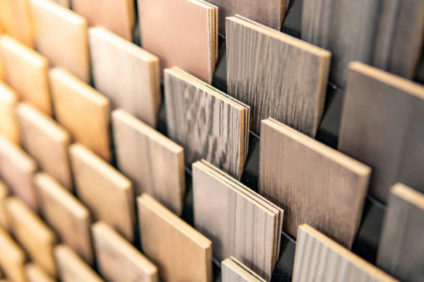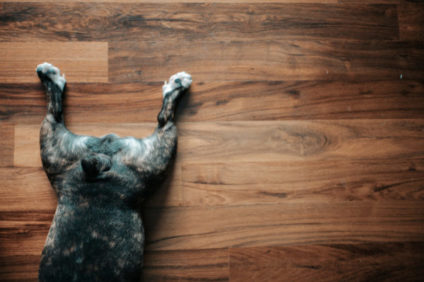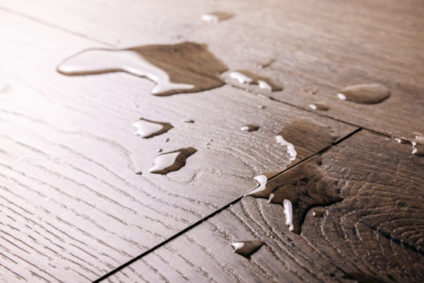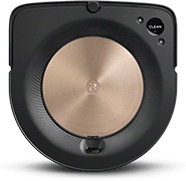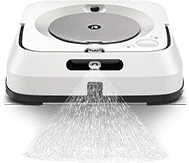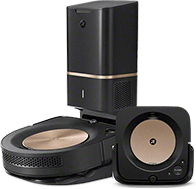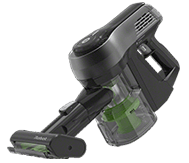How to Clean Laminate Floors Like a Pro
Maybe you’ve seen laminate bubble, crack, or separate before. Or, maybe you’ve seen how well it holds stains, and just can’t seem to get it clean. If you don’t know how to clean laminate floors safely, we have you covered.
Laminate isn’t as flimsy as it was decades ago. It’s a little more durable today. But, it still takes a little know-how to keep your laminate looking great for years to come.
Today, we’re going to go over how to do just that.
What is laminate anyway?
If you’d lived in any apartment in the 1990s, it’s very likely you’re familiar with the peel and stick sheets meant to look like tile (and not succeeding all that well).
Laminate doesn’t look like that anymore, thankfully.
Funnily enough, laminate now looks so similar to linoleum and vinyl floors that they’re very easy to get mixed up, and the only real differentiators are in their construction rather than appearance.
To clear things up, know that laminate is a synthetic material comprised of several layers. The most important is the core, which is typically made of a combination of melamine resin and fiber board.
On the top layer is just a print and veneer that looks very similar to real hardwood. At the very least, it’s on par with the print wood appearance of vinyl or laminate.
Got tile?
 Why you can’t just mop your laminate flooring
Why you can’t just mop your laminate flooring
First thing to note is that most laminate flooring is not waterproof. It has a veneer on it to make it have a bit of shine, like hardwood would have a varnish.
With laminate though, if there’s even a little bit of spacing between the boards, water can easily seep into that space and damage the fiber board, causing warping and bubbling of your planks.
It may even cause further separation between the laminate boards, or some rising as the planks swell.
Ergo, you want to avoid using a traditional tassel or sponge mop that uses a bucket of water. That amount of water on your floors is much more likely to cause damage than a wet mop that sprays a thin layer of cleaner.
How to clean laminate wood floors
Regular cleaning for laminate floors is pretty straightforward. You can still mop them, and even mop them regularly (once a week, or even daily).
The difference between mopping laminate and other hard floors is opting for that fine squirt or spray rather than dousing your floors with a lot of water or a damp mop.
You’ll also want to sweep your floors prior to mopping. Without that initial sweep, you’re not just pushing the dirt around, but you’re pushing it into crevices.
Remember that the seams between laminate boards aren’t sealed with anything. So when dirt or debris gets between them, they slowly start to push those boards apart, making them more susceptible to damage (especially from water) over time.
Because of that, you may even consider sweeping and vacuuming before mopping (or just letting your Roomba® robot vacuum cleaner take care of the vacuuming job each day).
In summary, a light and regular spot cleaning of your laminate flooring should follow these steps:
- Sweep your floors (and vacuum if you choose)
- Use a plastic knife or some other safe scraper to get up any grime that’s stuck to your laminate (You know, the kind that looks like old chewing gum, but you’re not quite sure. We’re not here to judge.)
- Use a spray mop with a microfiber cloth pad (or a Braava® robot mop) – as opposed to one of the older mops you have to wring – to spread a light cleaner over your floors in sections, and quickly wipe the surface dry.
- For even faster drying, you may even want to go over your floors again with a dust mop or dry mop pad or drying rags.
Need an easier way to maintain a clean home?
A House Cleaning Checklist for Each Room, by Day, Week, and Month
How to clean laminate floors with vinegar
A few decades ago (okay, maybe a few extra decades) most floors were hardwood. When cleaning hardwood floors, professional cleaners would almost always lightly strip them and add a coat of fresh wax to them (not candle wax, but similar).
That’d give the floors this nice, durable shine that also protected the wood and the seams between each plank.
Back then, they regularly used vinegar on hardwood floors as a way of removing the streaks caused by cleaning over the wax.
But that’s not really a problem most floors have today (unless you’re regularly using a polish with a wax in it). What happened though, is this rippling through time question about (and belief in) using vinegar to clean your floors.
The answer to whether or not you should use white vinegar on your laminate floor (or any type of flooring today)… is a hard NO.
Most floor manufacturers today actually bake in a layer of wax when they create laminate/ manufactured wood floor planks.
Meaning, you don’t have to wax the tops of your floors anymore. The consequence is that there isn’t that same level of protection for your floors.
So using an acid like vinegar will slowly eat away at the top finish of your flooring.
Take vacuuming and mopping off your list — all at once.
Let iRobot take care of the vacuuming and mopping so that you can take care of everything else.
Getting laminate floors clean without leaving a film
Okay, so you’ve probably tried a lot of cleaners in your day, just trying to get rid of that haziness and streaking on your floors.
Well, stop what you’re doing and check to make sure the clean solutions you’re using specify “for laminate floors.” Otherwise, they’re likely eating away at the top layer of your flooring because they’re too acidic.
Unless it’s a laminate approved floor cleaner or simply water with a very neutral ph cleaner, you’re going to get that haziness.
The problem is, once you’ve used the wrong cleaner, it’s going to be a challenge to remove that haziness. Even when you begin using the right cleaner, you might still see some left over from previous or long term damage caused by those cleaners.
The only thing you can really do is to continue using the appropriate cleaner and a microfiber mop head, and when possible, mop with the grain of your floors.
*Bonus tip for avoiding haze: when you’re cleaning your mop heads, skip the fabric softener. That can cause a greater haze on your floors. Besides, fabric softener clogs the fibers on this fabulously soft cloth and damages the cloth’s cleaning ability.*
Can you steam mop laminate floors?
Please don’t.
Steam mops will almost certainly void any warranty you have on your laminate flooring. Most manufacturers understand that steam and heat seeps into your laminate (and those unsealed seams) a lot easier than plain water and a laminate cleaning solution.
That seepage causes buckling and warping over time.
So while steam cleaners are the trendy twist on mopping, it’s not the greatest for any type of manufactured flooring.
Deep cleaning laminate that’s old and stained
Laminate is designed not to be waxed, refinished, or sealed… but overtime, it’s quite easy for laminate to develop stains, or simply look really old (unless it really is just plain old).
Remember, those planks aren’t waxed
like traditional floors, and seams separate over time from grains of dirt and food that come with… well, life.
It may be natural, but it may be the cause of some of those stains.
Now, getting those stains up DIY fashion is a little different from a typical hardwood floor, in which you’d simply strip the finish off, sand out the tough stains, and refinish your floors.
Are your floors hardwood?
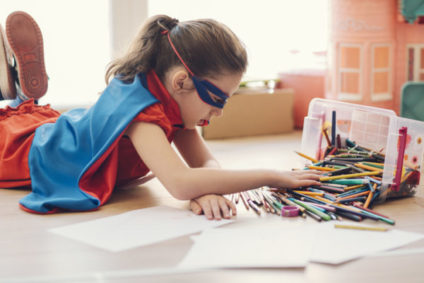
On the other hand, you can refinish the wear layer, adding a new layer of sealant that’ll actually add a bit of protection between the planks and enhance a bit of the sheen.
This is a process best left to professional floor restoration experts. Especially those that have gone to the manufacturers for training in restoration of laminate flooring.
For light or newly formed stains (such as crayon or scuff marks), you can almost always take it up with acetone (nail polish remover) or rubbing alcohol. But be sure to check with your specific floor manufacturer’s recommendations first.
Simply wet a clean cloth with acetone and rub into the stain until it comes up. For deeper set-in stains, you can leave an acetone damp cloth on top of the stain for an hour or so to release the stain.
Most manufactured floors have a strong enough wear layer to protect against really deep stains. But in the case that they do happen, you’re likely going to have to strip that wear layer off and refinish your floors. (Depending on the severity and breadth of the staining.)
Do your laminate floors always look dirty? There’s an explanation (and solution)
The solution is finding the right cleaning products. Any floor (not just laminate) that looks perpetually dirty, hazy, or dull is most likely due to the wrong cleaners.
Some floor cleaning products (yes, even floor cleaners) are tempting to buy but you don’t need it to be so full of additives, fragrances, and polish to get your floors to shine (at least temporarily).
Water with a small dose of a neutral cleaner or a specialized laminate cleaner is usually your best bet for keeping your floors looking new long term.
There are other possible causes though, like worn-in dirt and polish buildup.
Dirt, despite how small it is, is gritty and hard. As it’s pushed around by our feet and broom, it creates microscopic cuts on the surface of our floors. Over time, that leaves spaces for more dirt and grim to build up, leaving floors looking dirty no matter how much you clean them.
As for polish… you don’t generally need it on laminate. Over time, polish builds up because it’s usually wax based. That wax can turn to a bit of a milky color, or develop a haziness, if you’re using a gallon of hot water or the wrong cleaner on top of it.
Besides that, wax tends to have that milky color when there’s a lot of it, regardless of the types of cleaners you’re using.
Really the only way to remove it is to have a professional apply a stripper, and use a buffing machine to remove the buildup. They’ll be able to apply a protective sealant after they’re finished to restore shine.
The best cleaners for laminate floors

It’s unrealistic to avoid mopping altogether, especially if you have pets and/ or children. But, that doesn’t mean you should jump straight to a bunch of water or any old floor cleaner.
While you always want to aim for either a specially formulated laminate floor cleaner, you can also use a ph neutral cleaner. Dish soap and castille soap are typically great options for this.
Overall, the best cleaner is the one recommended by your manufacturer. You can usually get this information by calling the store you purchased it from or from the installers.
Looking for the perfect cleaning tools for your laminate floors? Check out our gift guide.
What NOT to use when cleaning laminate floors
While laminate is fairly easy to clean with regular sweeping with a soft-bristle broom and a mop, to keep laminate looking great, there are a few things you really shouldn’t use on your floors.
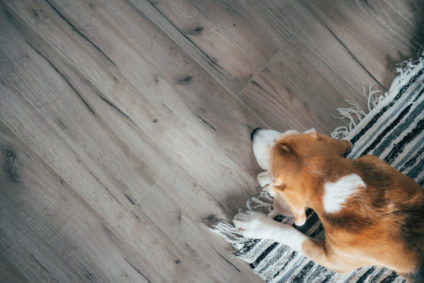
- A lot of water. You really don’t need much, and too much water will likely seep into the seams over time. A simple spray bottle (or spray mop) with the right cleaner/ water mix will do the trick.
- Abrasive cleaners or acidic cleaners (like steel wool or vinegar) will wear away at your floor’s finish, making floors look dull and posing a greater risk of long-term damage. You can still use a soft brush or scrubbers as long as the bristles aren’t very firm.
- Polish isn’t necessary for laminate floors, and will only cause buildup and a potentially hazy finish.
How to protect your laminate flooring
Laminate floor has a decent wear layer that protects it from most scratches and dents, but that doesn’t mean they can’t scratch or dent.
Here are a few things you can do to protect your floors:
- Add felt furniture protectors to the bottoms of chairs, tables, your couch legs, and other furniture that rests or moves over your laminate flooring.
- Consider adding a layer of sealant to the seams of each plank to keep them flush and protected from water and other liquid spills.
- If you notice any gaps between your floor planks, either use a rubber mallet and suction cup handle (available at most hardware stores) to lightly tap the planks back into place – or have a professional do this for you.
- Avoid things like shoes (especially heels) on your laminate and place mats at entrances into your home to trap dirt and mud.
- Trim pet nails regularly to avoid scratches from their joyful play.
- Lay down an area rug.
Ready to automate some chores? We have some ideas.
How often should you clean laminate floors?
There’s a standard for laminate floor cleaning of around every two weeks, but this isn’t set in stone.
The number of times you clean your laminate greatly depends on your life.
Lots of foot traffic (or little sticky feet), food messes (pets or kids? A lively kitchen?), family and friends regularly passing through? You’re probably going to need a few extra cleans during the week.
When in doubt, you can use the iRobot HOME App to schedule cleanings for your Braava jet robot mop so someone doesn’t have to think, “when was the last time I mopped?
All in all, it’s not the number of cleans that matter. What matters more are the cleaning methods, and what cleaners and cleaning tools you use.


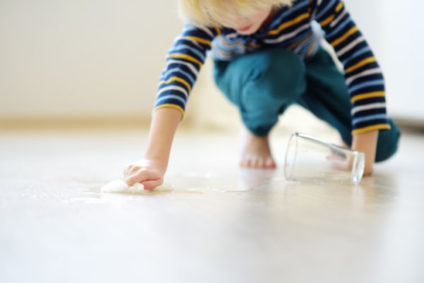 Why you can’t just mop your laminate flooring
Why you can’t just mop your laminate flooring
